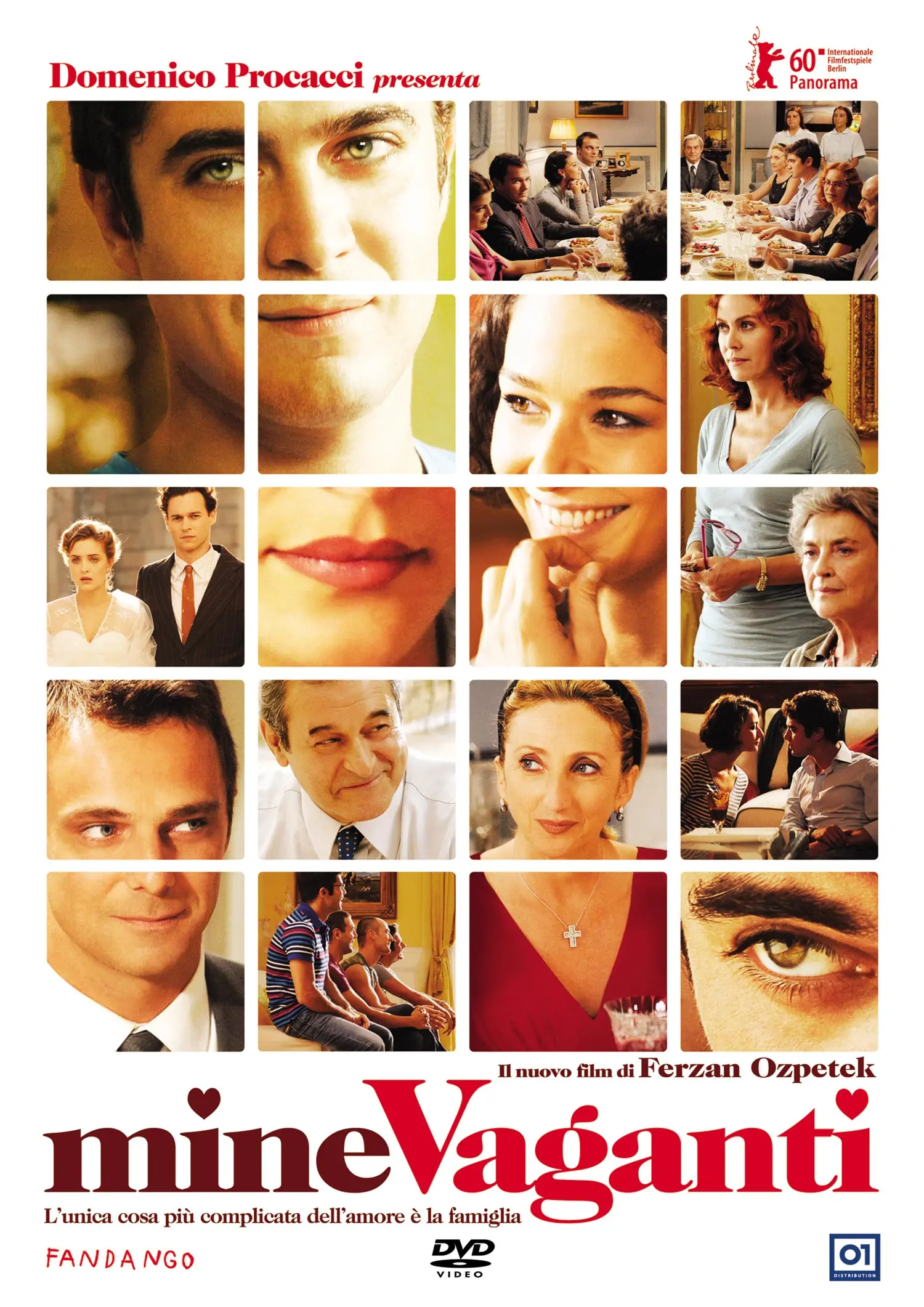

The prologue features a solitary and sad bride who crosses the countryside of the Salento area, past dry stone walls and olive groves, accompanied by the sound of the wind and the sea in the background: her destination is Masseria Cippano in the countryside of Otranto. She appears again, later, in the area of the ancient Porta Rudiae in Lecce.
Returning from Rome to Lecce where his domineering family live, Tommaso has several announcements to make. The interiors of his family home are those of Villa Materdomini which stands on the road to Monteroni, near Lecce, an empty house that was entirely dressed by set designers, while Ozpetek used the splendid terrace with hanging garden of Palazzo Marulli-Famularo in Via Paladini for exterior shooting. Alba lives in the same road, in an empty wing of Palazzo Tamborino-Cezzi.
Many scenes were shot in the streets and Baroque squares of Lecce. Piazzetta Carducci, dominated by the colonnade of the former Convitto Palmieri, is the backdrop for a fiery conversation between Tommaso and his brother Antonio. In Piazza Sant’Oronzo, Vincenzo and Tommaso put on a show of smiles in public, during this “laughter scene”, they sit at the Tito Schipa caffè. Equally intent on hiding any show of tension, Tommaso’s mother Stefania and aunt Luciana walk by the shops in the nearby Corso Vittorio Emanuele.
However, the unexpected happens and when Tommaso’s friends come to Lecce the fragile balance created in the family is at risk: the friends make the most of the nearby seashore spending the day at Punta della Suina, on the Gallipoli coast.
Not far from Lecce, in the direction of Maglie, is the Tandoi pasta factory in Corigliano d’Otranto which was used as the setting for the family business.
The touching final scene fulfils his grandfather’s wish to walk for the last time on the streets that had welcomed him years before and to see “the yellow stone, all that breath-taking light”: the procession passes by Palazzo dei Celestini, a Baroque monument joined to the Basilica di Santa Croce as part of a single complex.
The prologue features a solitary and sad bride who crosses the countryside of the Salento area, past dry stone walls and olive groves, accompanied by the sound of the wind and the sea in the background: her destination is Masseria Cippano in the countryside of Otranto. She appears again, later, in the area of the ancient Porta Rudiae in Lecce.
Returning from Rome to Lecce where his domineering family live, Tommaso has several announcements to make. The interiors of his family home are those of Villa Materdomini which stands on the road to Monteroni, near Lecce, an empty house that was entirely dressed by set designers, while Ozpetek used the splendid terrace with hanging garden of Palazzo Marulli-Famularo in Via Paladini for exterior shooting. Alba lives in the same road, in an empty wing of Palazzo Tamborino-Cezzi.
Many scenes were shot in the streets and Baroque squares of Lecce. Piazzetta Carducci, dominated by the colonnade of the former Convitto Palmieri, is the backdrop for a fiery conversation between Tommaso and his brother Antonio. In Piazza Sant’Oronzo, Vincenzo and Tommaso put on a show of smiles in public, during this “laughter scene”, they sit at the Tito Schipa caffè. Equally intent on hiding any show of tension, Tommaso’s mother Stefania and aunt Luciana walk by the shops in the nearby Corso Vittorio Emanuele.
However, the unexpected happens and when Tommaso’s friends come to Lecce the fragile balance created in the family is at risk: the friends make the most of the nearby seashore spending the day at Punta della Suina, on the Gallipoli coast.
Not far from Lecce, in the direction of Maglie, is the Tandoi pasta factory in Corigliano d’Otranto which was used as the setting for the family business.
The touching final scene fulfils his grandfather’s wish to walk for the last time on the streets that had welcomed him years before and to see “the yellow stone, all that breath-taking light”: the procession passes by Palazzo dei Celestini, a Baroque monument joined to the Basilica di Santa Croce as part of a single complex.
Meals are crucial to the story in Loose Cannons. To impress Tommaso’s friends, his father Vincenzo orders a tray of pasticciotti whose shortcrust pastry shell contains a filling of confectioner’s custard and are typical of the Salento area.

The Cantone family, owners of a large pasta company in Puglia, is on tenterhooks for the return of son Tommaso, destined to join his brother Antonio in the family business. However, each of them will have to deal with their own personal inclinations and situations and with what destiny will decide.